“Wild, dark times are rumbling toward us, and the prophet who wishes to write a new apocalypse will have to invent new beasts, and beasts so terrible that the ancient animal’s symbols of St. John will seem like cooing doves and cupids in comparison.
—Heinrich Heine: Lutetia. or; Paris. Augsburg Gazette, 12, VII (1842)
Introduction
The “Indo-Germanic race,” as it was called by the German archaeologist Gustav Kossinna, possessed a unique and primal faith that encompassed a strange collection of tales and beliefs. These ancient Norse religious accounts are invariably linked to our biological nature as members of the Aryan race. Kossinna placed the origin of the first Aryans on the northeastern Germanic Plain of Europe, extending eastward to the Vistula River in what is modern-day Poland. Current Jewish historians claim Kossinna was merely justifying German expansionism by pin-pointing the origin of the Indo-Germanic race in Poland, suggesting a need to return Poland to its Teutonic ancestors, but from what modern archaeology now indicates, as well as human genetics, it is now clear that the first few thousand years of the Aryan presence in Europe, began in this region and then later expanded into Central Germany, Scandinavia and Britain. This dominant culture was known as the Corded Ware Culture and then later split into the Northern Bell Beaker Culture which expanded into Central and Western Germany, the Lowlands and France, and into the British Isles, including Ireland. The other faction known as the Battle-Axe Culture expanded into Northernmost Germany and Scandinavia.
THE WRITINGS OF TACITUS
In the first century A.D., the Roman senator, writer and historian Cornelius Tacitus penned a now famous account of the Germans in which he gave clear descriptions of their habits, environments, customs, history, religion and phenotype. It is widely disputed that Tacitus was giving only a second-hand account that was less than reliable. Indeed, he never once even traveled to Germania to investigate the Germans firsthand, but, still, much of what he writes would be affirmed by later scholars. In Germania he writes:
In the traditional songs which form their only record of the past, the Germans celebrate an Earth-born god called Tuisto [Tyr]. His son Mannus is supposed to be the fountainhead of their race and himself to have begotten three sons who gave their names to three groups of tribes—the Ingaevones, nearest the sea; the Herminones, in the interior; and the Istaevones, who comprise all the rest. Some authorities, with the freedom of conjecture permitted by remote antiquity, assert that Tuisto had more numerous descendants and mentions more tribal groups such as Marsi, Gambrivii, Suebi and Vandilii—names which they affirm to be both genuine and ancient. The name Germania, however, is said to have been only recently applied to the country. The first people to cross the Rhine and appropriate Gallic territory, though they are known nowadays as Tungri, were at that time called German; and what was at first the name of this one tribe, not of the entire race, gradually came into general use in the wider sense. It was first applied to the whole people by the conquerors of the Gauls, to frighten them. Later, all the Germans adopted it and called themselves by the new name. (Tacitus, Germania)
Tacitus also decried their viciousness and frightening behavior as they entered battle:
They also have the well-known kind of chant they call baritus. By the rendering of this, they not only kindle their courage, but, merely by listening to the sound, they can forecast the issue of an approaching engagement. For they either terrify their foes or themselves become frightened, according to the character of the noise they make upon the battlefield; and they regard it not merely as so many voices chanting together but as a unison of valor. What they particularly aim at is a harsh, intermittent roar, and they hold their shields in front of their mouths, so that the sound is amplified into a deeper crescendo by the reverberation. (Tacitus, Germania)
Concludes Tacitus:
For myself, I accept the view that the peoples of Germany have never contaminated themselves by intermarriage with foreigners but remain of pure blood, distinct and unlike any other nation. One result of this is that their physical characteristics, in so far as one can generalize about such a large population, are always the same: fierce-looking blue eyes, reddish hair, and big frames—which, however, can exert their strength only by means of violent effort. They are less able to endure toil or fatiguing tasks and cannot bear thirst or heat, though their climate has inured them to cold spells and the poverty of their soil to hunger. (Tacitus, Germania)
In the Agricola, Tacitus makes further observations regarding the Keltic tribes of Britain, and they show striking similarities in both a cultural and biological sense with his descriptions of the ancient Germans. The Agricola also gives an account of the exploits of Boudicca and the revolt she led against the Roman occupation of Britain. The Kelts and Germans were definitely of the same genetic and cultural background but differed slightly with regard to language and different aspects of their religious rituals and deities, many of which remained very similar to their Germanic counterparts, but no doubt did in fact differ in specific ways in terms of their names and the stories associated with them.
MYSTERIOUS ICE AGE ARTWORK
Caves often play a major role in the mythology of various countries and peoples, and this includes the ancestors of our present European folk. It was in the primordial darkness of caves that, perhaps, the gods first spoke to our people. One of the earliest triumphs of the European intellect comes in the form of European cave art dating all the way back to the dawn of the White race itself during the early Pleistocene. These were the antecedents of later works produced by the ancestors of today’s northern peoples. In Prehistoric Art in Europe: A Deep-Time Social History, John Robb writes:
The prehistoric art of Europe covers a vast spectrum, from the earliest Ice Age cave paintings of more than 30,000 years ago at sites such as Chauvet Cave to Iron Age metalwork and statuary contemporary with Roman civilization. It encompasses figurines, cave paintings, rock carvings, statuary, megalithic tomb decorations, metalwork, modeling in metal and clay, and various figured objects. (Robb, pp.635-654, 2021).
Many of these objects which have been recovered provide a window not only to the long-forgotten Ice Age but possess imagery consistent with more modern godlike figures such as Thor, Odin, and Freyr of the Norse pantheon. It therefore provides roots for the White race, most specifically with the Germanic branch of the Indo-European family. Also found in caves throughout modern-day Europe are images which can clearly be identified as swastikas. As this author states in his book Rise of the Aryans: How Ancient Whites Influenced and Established Global Civilization, one of the earliest examples of a swastika was found in the Ukraine, carved onto the side of woolly mammoth tusks. Such artifacts, no doubt, also pertain to a multiplicity of European cultures, including that of our Keltic, Slavic, Baltic and Germanic ancestors. In fact, the swastika itself is a universal symbol of the Sun, of creation and good health.
YGGDRASIL AND ATLANTIS
Paramount to the Norse and Teutonic worldview was the central object known as Yggdrasil, often called the world or cosmic tree, its many branches connecting the nine worlds of creation together. Some alternative scholarship has linked the world tree to the mythical Atlantis described by Plato and his ancestor Solon, who learned the ancient tale from the Egyptians at the temple of Edfu. Even though stories like Atlantis are essentially mythological in nature, they do offer us insights to the culture and traditions of our primordial ancestors, especially in regard to the motivations of the Greeks and Egyptians, who were initially ruled by an aristocracy of Nordic blood.
ANCIENT ARYAN BELIEFS
In their primitive runic inscriptions, and the richly told Icelandic sagas, originally passed down orally by wandering storytellers called bards, our ancestors reached out to us from beyond the grave to challenge and beguile us. With the richness of the available documentation and the emerging archaeological evidence, the visions of an arcane, primeval world began to take definite shape. It is through a connection with the beliefs and traditions of our common White European ancestors, not the desert cultures of the Near East or elsewhere, that give our existence depth and meaning. By examining those ancient, primal Nordic ways, we are engaging in a fantastic journey of self-discovery and spiritual realization. We gain insights into ourselves not only in our present-day lives, but in the context of our forgotten forefathers. These long-lost brethren now speak to us down through the hundreds of centuries now past. In the Third Reich original publication Die Nordischen Grundlagen Europas, translated into English as The Nordic Foundations of Europe, National Socialist writer and folk researcher Kurt Pastenaci elaborates on the nature of faith among the ancient Teutonic peoples. In it he writes:
Indo-Germanic piety lives in the world. It sees in the world the great connection of a meaningful, divine order. This order fills the whole world in all details, hence the pious man is easily tempted to see “god” in things themselves: In trees, in rivers, in the earth, as crop basins, among other things and, hence, comes to a “polytheism.” Man stands in this order, god next to him as good friend. It is his task to fulfill the tasks of life here in the world. (Pastenaci, pp.6, 1935)
The early beliefs of Northern Europe encompass a rich and sometimes sinister mythological tradition that includes not only giants, but an entire host of magical and mystical creatures. The ancient Norse divided the peoples of the world into three distinct categories: civilized people, barbarians and sub-humans, such as the skraelings or American Indians of North America.
When the Vikings entered a region for the first time, they took their swords and battle axes in hand and tested them out on anyone they encountered, to determine whether they could be killed and thus were human, or whether they were invincible, which meant they were giants or members of one of the other many magical races, and therefore immortal. (Lilley, H., Illescas, A., Meyers, E., 2016)
Examples of the magical races include orcs, trolls, elves, half gods and, of course, giants. All of these were very similar to the creatures that the famous author J. R. R. Tolkien wrote about in The Hobbit and The Lord of the Rings. (Lilley, H., Illescas, A., Meyers, E., 2016)
In attempting to understand Norse mythology, we need to understand its origins. According to the late-19th and early-20th-century writer Donald A. Mackenzie, Keltic, Teutonic and Norse mythology demonstrate a definite commonality. He writes:
It would appear, that archaic giant-lore is pre-Keltic and pre-Teutonic, and therefore implies a common inheritance. In the wars of the Olympians and Titans, of the Irish Danann gods and the Fomorach, and of the Aesir and the Jotuns, we may have echoes of ancient racial conflicts. The old tribal peoples attributed successes to their gods and remembered their battles as the battles of rival gods. For these giants are also gods of archaic conception. In Scotland, certain of them are associated with the fortunes of families and tribes. On the other hand, gods are but exalted giants; the boisterous Olympians find their counterparts in the Scandinavian Jotuns, rather than in the more refined Aesir and Vanir. (Mackenzie 1912)
Odin, the king of the Norse gods and the Germanic equivalent of Jupiter, is in reality a one-eyed giant, a cyclops. His eye was sacrificed to Mimir’s pool to obtain the Jotuns’ gift of divine prediction. Odin is also described as the wind god, or the Wild Huntsman. Odin’s son, Thor, was originally an oak god. The sacred tree of Odin in northern Germany was a 1,000-year-old oak at the time of its destruction by Christian forces. The heroes of the Teutonic culture were fierce in their determination not to be outdone by all manner of giants that they frequently fought against. Mackenzie writes, “When the tribal heroes of northern peoples were glorified by storytellers, they were invariably depicted as giant-killers.” (Mackenzie 1912, pp.13)
CONCLUSION
It was the author Robert E. Howard, known for his now-famous character Conan the Barbarian, a constant hero of notorious pulp fiction, that wrote: “The ancient empires fall, the dark-skinned people fade, and even the demons of antiquity gasp their last breath, but over all stands the Aryan barbarian, white-skinned, cold-eyed, dominant, the supreme fighting man of the Earth.” (Howard, pp. 5, 1912)
Indeed, Heinrich Himmler and Rosenberg had similar ruminations. Himmler asserted these in Stettin to soldiers of the SS (July 13, 1941):
It is a war of distinct ideologies and the eternal struggle of races. On one side stands National Socialism: an ideology, founded on the values of our Germanic, Nordic blood. It is worth the world as we want to see: beautiful, orderly, socially fair, a world that, may be, still suffers some flaws but, overall, a happy, beautiful world filled with culture, which is precisely Germany. On the other side stands [a billion] people, a mixture of races and peoples, whose names are un-pronounceable, and whose physical nature is such that the only thing that they can do is to shoot without pity or mercy. These animals, who do not respect our level of culture and civilization, who show no mercy for our captured [soldiers], must be gotten rid of or exterminated on the same basis of swiftness and brutality. You will see them for yourself.
These people have joined a Jewish religion, one ideology, called Bolshevism, with the task of having now Russia—half in Asia, parts of Europe—crush Germany and the world. When you, my friends, are fighting in the East, you keep that same fight against the same subhumans, against the same inferior races that once appeared under the name of Huns and, later—1,000 years ago during the time of King Henry and Otto I—the name of the Hungarians, and later under the name of Tatars, and then they came again under the name of Genghis Khan and the Mongols. Today they are called “Russian” under the political banner of Bolshevism. (Kurlander, pp. 122, 2017)
As a Slavic Russian myself, I find German National Socialism’s views on Slavs to be antithetical to the notion of the Aryan race itself. Pure Slavs are clearly of Indo-European origin, and the only Slavs that are distinctly different are those of mixed race, which there are many, and the Jews stereotyped them as the “typical Russian appearance,” in an effort to de-humanize Russians. Pure Russians are one of the oldest vestiges of the White race alive in the world, and their history goes back to a remote period in European prehistory, far older than that of Germany, and even the Scandinavians, according to political prisoner Matt Hale.
Indeed, we live in an unprecedented time. Just as our enemies are at the gates, Christianity, thanks to attacks from Cultural Bolsheviks, is rapidly declining, and our White roots are re-awakening. The traditional religion of our Volk is once again rising, itself. Let us never forget the onslaught of the Aryan spirit, because that means victory, and that triumph must and will come, as ordained by the spirit of the universe and the will of our mighty gods. As the 16th-century heretic and author Giordano Bruno proclaimed:
“Old Jove, may the Germans come to realize their own strength, then may they not be men, but gods!” (The SS: Blood and Soil, 2004) ❖
REFERENCES
Kurlander, E. (2017). Hitler’s Monsters: A Supernatural History of the Third Reich. Yale University Press.
Rosenberg, A. (2019). The Myth of the 20th Century: An Evaluation of the Spiritual-Intellectual Confrontations of Our Age.
Madacy Home Video (Film). (2004). The Occult History of the Third Reich [Disc 2].
St. Laurent, Quebec: Madacy Home Video.
Campana, M., Bower, M. and Crabtree, P. (2013). “Ancient DNA for the Archaeologist: The Future of African Research.” The African Archaeological Review, 30(1), 21-37. Retrieved June 24, 2021, from www.jstor.org.
Childress, D.H. (1996). Lost Cities of Atlantis, Ancient Europe & the Mediterranean. Stelle, Ill: Adventures Unlimited Press.
Deguilloux, M. and Mendisco, F. (2013). Ancient DNA: A Window to the Past of Europe. Human Heredity, 76(3/4), 121-132. Retrieved June 24, 2021, from www.jstor.org.
Mackenzie, D.A. and Dore, L.C.P.G. (1985). German Myths and Legends.
Robb, J. (2015). Prehistoric Art in Europe: A Deep-Time Social History. American Antiquity, 80(4), 635-654. Retrieved June 24, 2021 from http://www.jstor.org.
Tacitus, Cornelius, in Audano, S., Tacitus, C. (2020). Germania.
UFO TV. (2005). Technologies of the Gods: The Case for Prehistoric High Technology.
Venice, Calif: UFO TV.
Lilley, H., Illescas, A., Meyers, E., PBS Distribution (film), British Broadcasting Corporation, WGBH (Television station: Boston, Mass.) and France television. (2016). Nova.
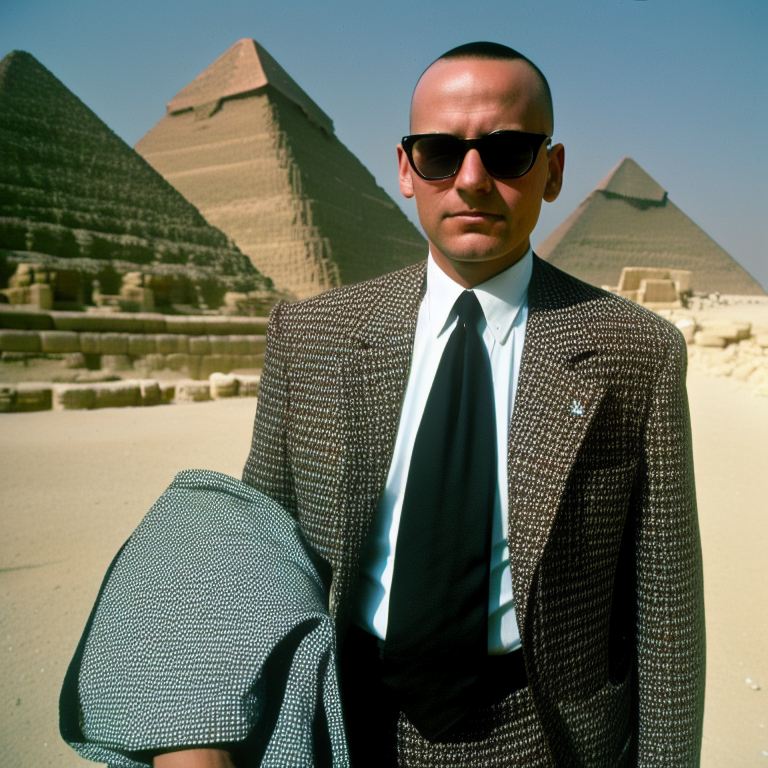
Patrick Chouinard is a distinguished expert on European history and authority on the White race and its roots. He has a BA in Global History and European Studies and currently is seeking an MA in Ancient and Classical History. He has authored six books and is a regular contributor to notable publications such as Ancient American magazine, The Barnes Review, Renegade Tribune, and Nexus. His expertise spans various facets of European history, showcasing a deep understanding and commitment to disseminating historical knowledge.

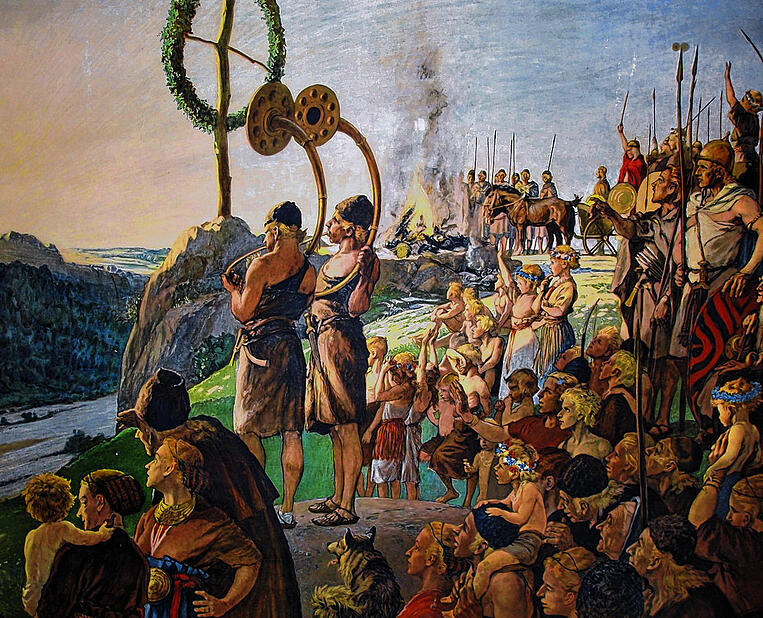

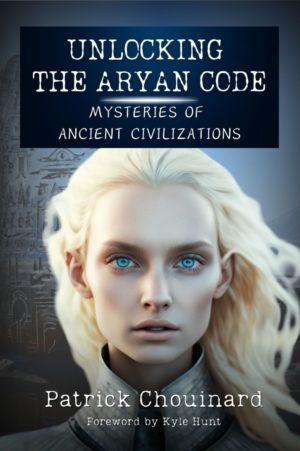


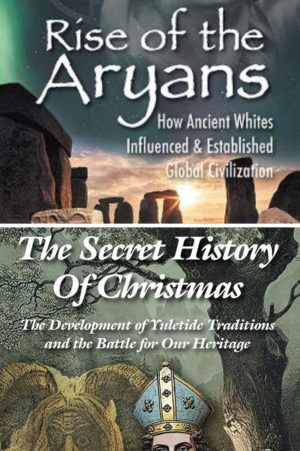
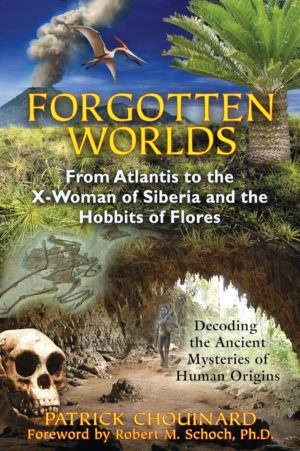

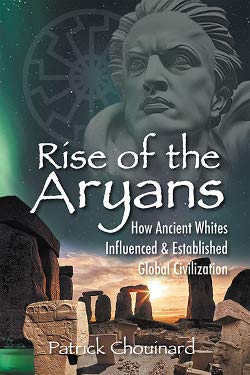
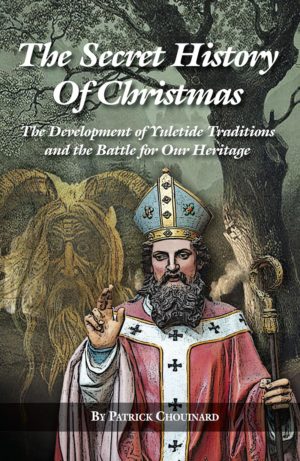



If you have a fire tv, there is an app ‘LAVA ,tv show/documentary showing the medieval civilization and regality of the russo sphere. That app has primarily russian language content.